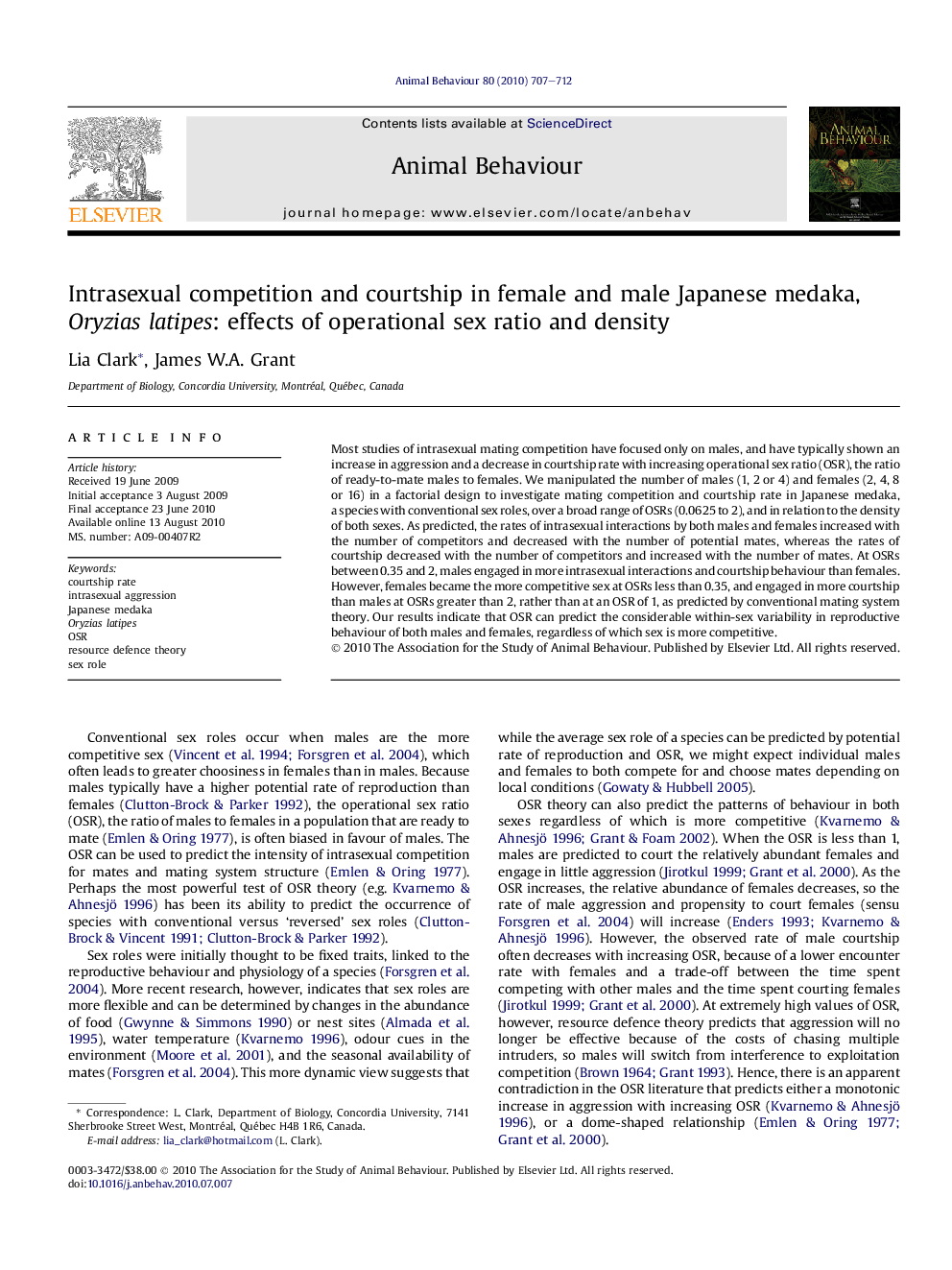| Article ID | Journal | Published Year | Pages | File Type |
|---|---|---|---|---|
| 2417124 | Animal Behaviour | 2010 | 6 Pages |
Most studies of intrasexual mating competition have focused only on males, and have typically shown an increase in aggression and a decrease in courtship rate with increasing operational sex ratio (OSR), the ratio of ready-to-mate males to females. We manipulated the number of males (1, 2 or 4) and females (2, 4, 8 or 16) in a factorial design to investigate mating competition and courtship rate in Japanese medaka, a species with conventional sex roles, over a broad range of OSRs (0.0625 to 2), and in relation to the density of both sexes. As predicted, the rates of intrasexual interactions by both males and females increased with the number of competitors and decreased with the number of potential mates, whereas the rates of courtship decreased with the number of competitors and increased with the number of mates. At OSRs between 0.35 and 2, males engaged in more intrasexual interactions and courtship behaviour than females. However, females became the more competitive sex at OSRs less than 0.35, and engaged in more courtship than males at OSRs greater than 2, rather than at an OSR of 1, as predicted by conventional mating system theory. Our results indicate that OSR can predict the considerable within-sex variability in reproductive behaviour of both males and females, regardless of which sex is more competitive.
